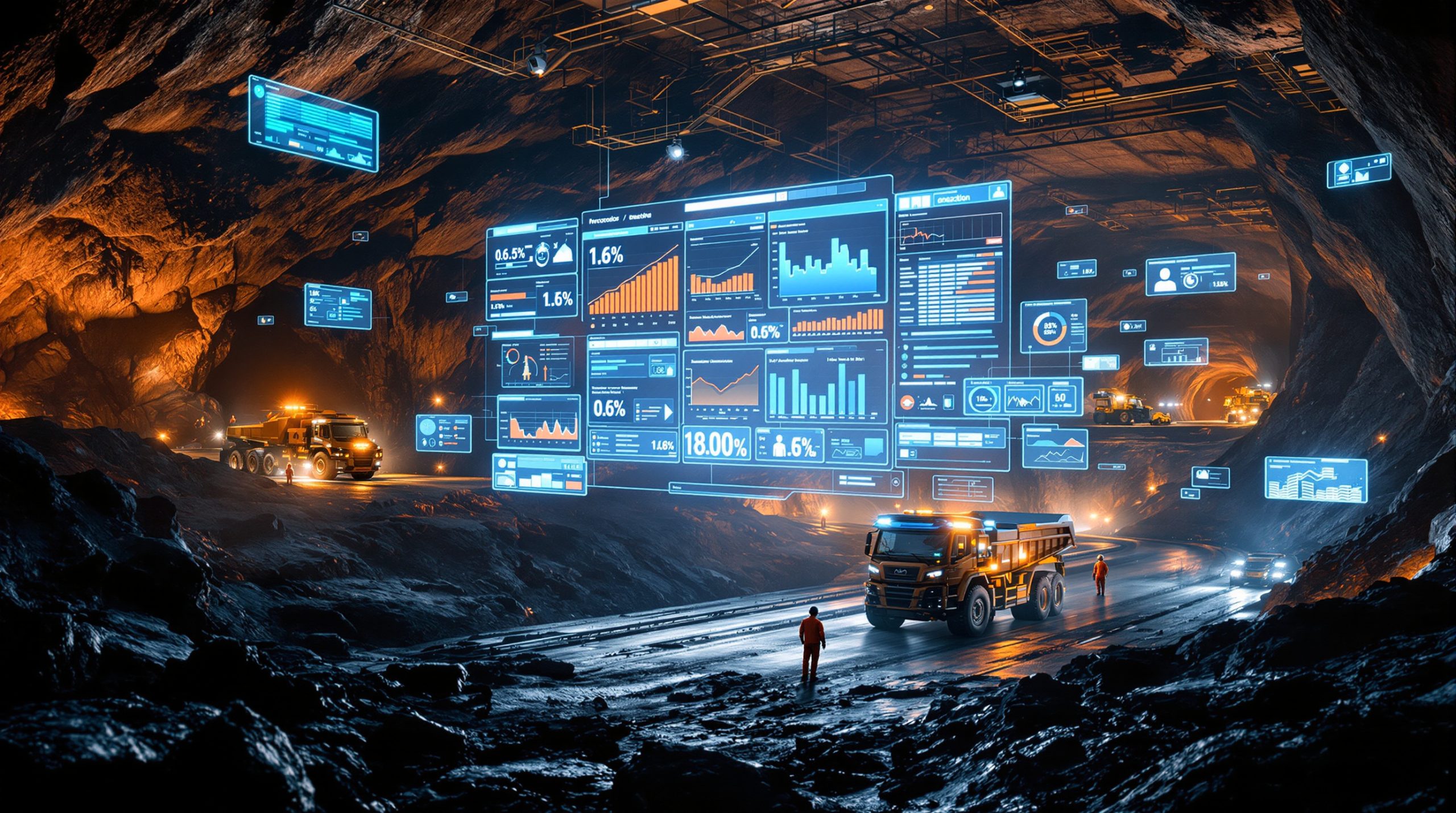Understanding Acid Rock Drainage and Metal Leaching: Natural Processes and Mining Impacts
Acid rock drainage occurs naturally throughout geological time, shaping landscapes and creating mineral deposits through complex chemical processes. Understanding the distinction between natural and mining-accelerated ARGD is crucial for responsible resource development and environmental protection.
What is Acid Rock Generation and Drainage (ARGD)?
The Natural Chemical Process Behind ARGD
Natural acid rock generation drainage and metal leaching results when iron-sulfur minerals, primarily pyrite (FeS₂) and pyrrhotite (FeS), undergo atmospheric oxidation in the presence of naturally occurring sulfur-consuming microbes. This reaction produces sulfuric acid, significantly reducing pH levels in surrounding environments and potentially solubilizing heavy metals. These natural processes have been occurring for millions of years, gradually transforming landscapes and creating distinctive geological features.
Distinguishing Natural vs. Anthropogenic ARGD
While natural ARGD has occurred throughout Earth's history, human activities—particularly mining operations—can dramatically accelerate these processes. Mining exposes and fragments acid-generating materials, increasing surface area and reaction rates by several orders of magnitude, which intensifies metal leaching in affected areas. The key difference lies in reaction rates: natural ARGD occurs slowly over geological timeframes, while anthropogenic ARGD happens rapidly, potentially overwhelming natural buffering systems.
Key Indicators in the Landscape
Natural ARGD processes create distinctive landscape features that geologists use as exploration indicators:
- Gossanous outcrops (oxidized mineral zones) with distinctive red, orange, and yellow colorations
- Distinctive red-colored mountains or creeks that signal iron oxidation
- Topographic features with telling names (e.g., Red Mountain, Sulphide Creek, Alum Creek)
- Areas with naturally acidic water bodies, often supporting specialized microbial communities
These natural indicators have guided prospectors and geologists for centuries, serving as visible signposts of potential mineral wealth beneath the surface.
How Does Metal Leaching Occur in Natural Systems?
The Metal Mobilization Process
As sulfuric acid forms through ARGD, it creates low-pH conditions that dissolve and mobilize various metals from surrounding rock. This natural leaching process has been ongoing for millions of years, creating both environmental challenges and mineral enrichment opportunities. Metals like copper, zinc, lead, and cobalt become soluble under acidic conditions, moving through rock and soil until they encounter conditions that cause reprecipitation.
Factors Affecting Metal Mobility
Several interconnected factors influence how metals move through natural systems:
- Rock type and mineral composition (sulfide content, neutralizing potential)
- Presence of neutralizing minerals like calcite and dolomite
- Water flow patterns (surface runoff, groundwater movement)
- Climate conditions (precipitation rates, temperature fluctuations, seasonal variations)
- Microbial activity levels, particularly iron and sulfur-oxidizing bacteria
In arid environments, metal mobility may be limited by lack of water, while in wet climates, metals can migrate considerable distances from their source.
Secondary Mineral Formation
The ARGD process leads to the formation of distinctive secondary minerals through weathering and precipitation reactions, including:
- Iron oxides and hydroxides (creating visible rust-colored staining)
- Secondary copper minerals such as malachite, azurite, and chalcanthite
- Various sulfate minerals including jarosite, alunite, and melanterite
- Clay minerals from the breakdown of feldspars and other silicates
These secondary minerals not only create visually striking landscapes but also serve as important indicators of subsurface ore deposit geology.
Why Are Oxide and Supergene Zones Economically Important?
Formation of Supergene Enrichment
Over geological timescales (millions of years), ARGD processes create economically valuable mineral deposits through sequential processes:
- Dissolution of primary minerals in acidic conditions
- Downward migration of metal-rich solutions through fractures and pores
- Reprecipitation of concentrated metals in enriched zones below the water table
- Development of oxide caps (gossans) and supergene blankets (mantos)
This natural concentration mechanism can increase metal grades by 2-5 times compared to primary mineralization, turning marginal deposits into economic resources.
Case Study: Windy Craggy Deposit
The Windy Craggy copper-cobalt-gold-silver-zinc deposit in northwestern British Columbia exemplifies significant supergene enrichment:
- Historical resource of 3.2 million tonnes at 2.55% Cu, 0.82 g/t Au, and 8.88 g/t Ag
- Features chalcocite, native copper, and chalcanthite enrichment in supergene zones
- Includes gold and silver-enriched gossan caps formed through preferential leaching
- Represents a potentially mineable resource created through natural ARGD processes over millions of years
This deposit demonstrates how natural acid generation can concentrate metals into economically viable grades through long-term natural processes.
Economic Significance in Global Mining
Supergene enrichment zones form dominant copper resources in several regions:
- Major South American copper deposits (Chile, Peru) derive over 50% of their value from supergene zones
- Significant porphyry copper deposits worldwide feature enrichment blankets crucial to their economics
- Massive sulfide deposits with overlying enrichment zones provide higher-grade resources
- Historic mining districts often targeted these enriched zones first, leaving primary sulfides for later development
Without natural ARGD processes creating these enrichment zones, many world-class copper mines would not exist as economic entities.
How Can Remote Sensing Identify ARGD Features?
Detection Technologies and Methods
Geologists employ various remote sensing techniques to identify gossans and related alteration:
- Multispectral satellite imagery (Landsat, ASTER) for broad-scale identification
- Hyperspectral scanning to detect specific mineralogical signatures
- Infrared detection of diagnostic minerals like hematite, goethite, and jarosite
- Digital elevation models to identify topographic features associated with resistant gossans
These technologies allow rapid assessment of large areas, particularly in regions with limited vegetation cover.
Applications in Mineral Exploration
Remote sensing has proven highly effective for:
- Mapping prospective mineral sites in non-vegetated terrain across continents
- Identifying natural acid rock generation zones for baseline environmental studies
- Detecting alteration patterns associated with mineralization at multiple scales
- Prioritizing exploration targets based on surface expressions of underlying processes
Modern exploration programs often begin with remote sensing analysis before deploying field teams, saving time and resources.
Limitations and Considerations
Remote sensing techniques face important challenges:
- Vegetation cover limiting surface visibility, particularly in temperate and tropical regions
- Seasonal variations affecting detection capabilities due to snow cover or vegetation changes
- Resolution limitations for smaller features, requiring follow-up ground investigations
- Need for ground-truthing to confirm findings and calibrate remote sensing interpretations
Despite these limitations, remote sensing remains a vital tool in identifying both natural ARGD features and potential mineral resources.
When Should ARGD Studies Begin in Mining Projects?
Integrating ARGD Assessment Throughout Project Lifecycle
Effective ARGD management requires studies to begin during:
- Early exploration stages to establish baseline conditions
- Project development phases to inform design decisions
- Active mining operations to monitor ongoing processes
- Reclamation planning to develop effective mitigation strategies
- Post-closure monitoring to ensure long-term performance
This lifecycle approach ensures that ARGD risks are identified early and managed proactively rather than reactively.
Benefits of Early Characterization
Starting ARGD studies early allows mining companies to:
- Differentiate between natural and anthropogenic sources, crucial for regulatory compliance
- Establish environmental baselines before disturbance occurs
- Develop accurate risk assessments for metals mobilization
- Design appropriate waste rock management strategies based on material characteristics
- Plan effective reclamation approaches tailored to site-specific conditions
Early characterization can reduce long-term costs by 30-50% through proactive planning rather than reactive remediation.
Regulatory and Compliance Considerations
Early ARGD characterization helps address:
- Environmental impact assessment requirements in multiple jurisdictions
- Permitting conditions that increasingly focus on long-term geochemical stability
- Stakeholder concerns about water quality and environmental protection
- Long-term liability management for corporate risk reduction
- Closure planning obligations that extend decades beyond mine life
Regulatory frameworks in Canada, the United States, Australia, and other mining jurisdictions now mandate comprehensive ARGD assessments as part of the permitting process, often involving detailed environmental impact debates.
How Can Mining Operations Manage ARGD Risks?
Preventive Strategies
Effective ARGD management includes:
- Proper handling and disposal of acid-generating materials based on geochemical classification
- Segregation of waste rock based on acid-generating potential and neutralization capacity
- Encapsulation of high-risk materials with non-acid generating waste or engineered covers
- Water management systems to control acid drainage pathways and collection
- Oxygen exclusion techniques (underwater disposal, covers) to prevent sulfide oxidation
These preventive approaches focus on interrupting the conditions necessary for ARGD formation—oxygen access, water transport, or bacterial activity.
Monitoring Requirements
Comprehensive monitoring programs should track:
- Water quality parameters (pH, conductivity, metal concentrations) at strategic locations
- Seepage from waste facilities to detect early signs of acid generation
- Groundwater conditions through well networks surrounding potential sources
- Surface water impacts in receiving environments
- Effectiveness of mitigation measures through time-series analysis
Modern monitoring increasingly incorporates real-time sensors and automated reporting systems to provide early warning of changing conditions.
Remediation Approaches
When ARGD issues occur, remediation options include:
- Neutralization treatments using limestone, lime, or other alkaline materials
- Water treatment systems ranging from passive to active technologies
- Covers and barriers to limit oxygen and water infiltration into acid-generating materials
- Passive treatment systems (wetlands, limestone drains) for long-term management
- Active chemical treatment plants for severe cases requiring ongoing intervention
The most appropriate approaches depend on site-specific factors including climate, geology, scale of impact, and available resources.
What Are the Long-Term Environmental Implications of ARGD?
Adaptation of Ecosystems
Natural environments adapt to changing geochemical conditions over time:
- Development of metal-tolerant ecological communities in naturally acidic areas
- Evolution of specialized microorganisms capable of thriving in extreme conditions
- Establishment of unique vegetation adapted to high metal concentrations
- Creation of distinctive landscape geochemistry that influences local ecology
These adaptive processes occur over ecological timeframes but cannot match the rapid changes induced by mining activities.
Temporal Perspectives on ARGD
The environmental and economic impacts of natural acid rock generation drainage and metal leaching vary based on timeframe:
- Short-term: Often negative environmental impacts requiring active management
- Geological timeframe: Can create valuable mineral resources through enrichment
- Post-mining: Potential for low-grade waste to become enriched over time, though this occurs too slowly for human planning horizons
This temporal disconnect—between immediate environmental concerns and geological enrichment processes—presents a fundamental challenge for resource management.
Balancing Environmental Protection and Resource Development
Mining operations must balance:
- Extraction of valuable minerals needed for modern technologies and infrastructure
- Protection of water resources for ecological and human needs
- Minimization of long-term environmental liabilities for corporate sustainability
- Sustainable management of waste materials through innovative approaches
- Effective reclamation planning that addresses ARGD risks proactively
This balance requires sophisticated understanding of both natural ARGD processes and engineering solutions to prevent or mitigate unwanted impacts. Many companies are now implementing decarbonization strategies alongside their ARGD management plans to address broader ESG challenges in mining.
What Resources Are Available for ARGD Education and Management?
Technical References and Guidance
Several key resources provide valuable information on ARGD:
- "Acid Mine Drainage, Rock Drainage, and Acid Sulfate Soils" (Jacobs, Lehr, and Testa, 2014) – comprehensive textbook
- Online acid rock drainage courses from EduMine with practical application approaches
- Industry best practice guidelines from mining associations and regulatory bodies
- Regulatory guidance documents specific to different jurisdictions
- ICMM's practical guidance on ARDML management for mining operations
These resources provide both theoretical understanding and practical management approaches.
Industry Collaboration Initiatives
Collaborative approaches to ARGD management include:
- Knowledge sharing among mining companies through industry associations
- Research partnerships with universities to develop innovative solutions
- Technology development initiatives focusing on prevention and treatment
- Case study documentation to build collective knowledge
- International working groups on acid drainage to establish best practices
These collaborative efforts recognize that ARGD challenges extend beyond individual companies and require shared solutions, with some projects emerging as a sustainable mining benchmark for the industry.
FAQ About Acid Rock Drainage and Metal Leaching
How can you tell if a site has natural ARGD versus mining-induced ARGD?
Natural ARGD typically shows evidence of long-term weathering processes, established vegetation patterns adapted to acidic conditions, and gradual transitions in water chemistry. Mining-induced ARGD often appears more abrupt, with sharper boundaries, more intense reactions, and less ecological adaptation. Baseline studies before mining begins are essential for making this distinction, as they document the pre-existing natural conditions that may include background acidity and metal concentrations.
Can acid-generating waste rock ever become an economic resource?
Yes, with sufficient time and under appropriate conditions, low-grade waste rock containing sulfide minerals could theoretically undergo natural supergene enrichment processes. However, this occurs over geological timeframes (thousands to millions of years) and is not a practical management strategy for modern mining operations. Some mining companies are exploring accelerated leaching technologies to extract remaining metals from waste rock, essentially mimicking natural processes on human timeframes.
What role do microorganisms play in ARGD processes?
Microorganisms, particularly iron and sulfur-oxidizing bacteria like Acidithiobacillus ferrooxidans, catalyze the oxidation reactions that generate acid. These microbes can accelerate reaction rates by factors of 10⁶ compared to purely abiotic processes, making them critical players in both natural and mining-related ARGD. Some remediation approaches target microbial activity through inhibitors or environmental modifications to reduce acid generation rates.
How does climate change affect ARGD processes?
Climate change may influence ARGD through altered precipitation patterns, temperature increases, and more extreme weather events. These changes could potentially accelerate weathering reactions, modify water flow patterns, and affect the effectiveness of mitigation strategies designed for current climate conditions. Mining operations and closure plans increasingly incorporate climate change scenarios into long-term ARGD risk assessments to ensure resilience against changing environmental conditions.
Further Exploration:
Readers interested in learning more about natural acid rock generation drainage and metal leaching can explore educational resources from mining industry associations, geological surveys, and environmental agencies that provide detailed information on these complex geological processes and their implications for resource development.
Want to Spot the Next Major Mineral Discovery?
Discovery Alert's proprietary Discovery IQ model instantly notifies investors of significant ASX mineral discoveries, turning complex geological announcements into actionable investment opportunities. Explore why major mineral discoveries can lead to substantial returns by visiting our dedicated discoveries page and position yourself ahead of the market.




